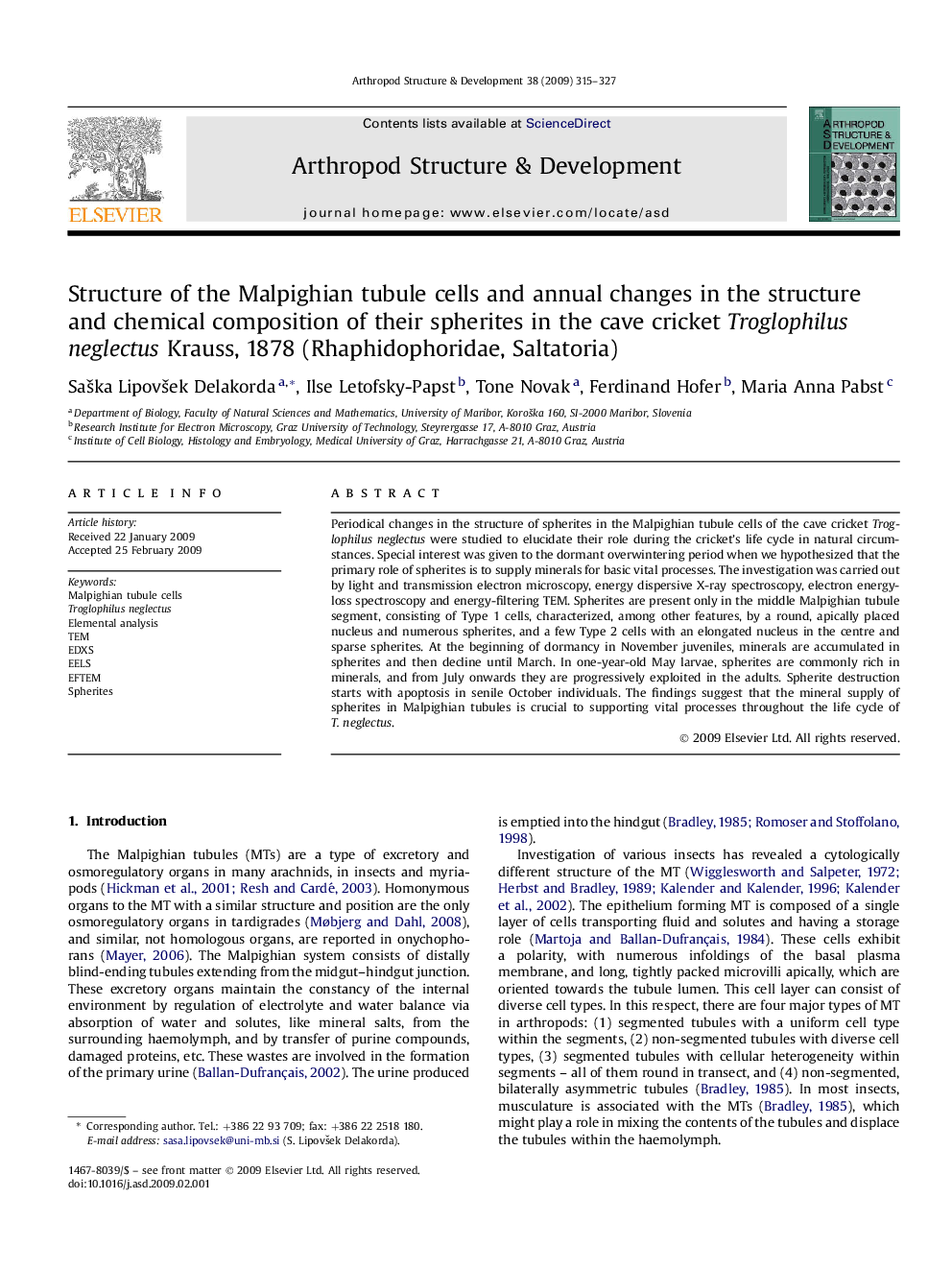| Article ID | Journal | Published Year | Pages | File Type |
|---|---|---|---|---|
| 2779050 | Arthropod Structure & Development | 2009 | 13 Pages |
Periodical changes in the structure of spherites in the Malpighian tubule cells of the cave cricket Troglophilus neglectus were studied to elucidate their role during the cricket's life cycle in natural circumstances. Special interest was given to the dormant overwintering period when we hypothesized that the primary role of spherites is to supply minerals for basic vital processes. The investigation was carried out by light and transmission electron microscopy, energy dispersive X-ray spectroscopy, electron energy-loss spectroscopy and energy-filtering TEM. Spherites are present only in the middle Malpighian tubule segment, consisting of Type 1 cells, characterized, among other features, by a round, apically placed nucleus and numerous spherites, and a few Type 2 cells with an elongated nucleus in the centre and sparse spherites. At the beginning of dormancy in November juveniles, minerals are accumulated in spherites and then decline until March. In one-year-old May larvae, spherites are commonly rich in minerals, and from July onwards they are progressively exploited in the adults. Spherite destruction starts with apoptosis in senile October individuals. The findings suggest that the mineral supply of spherites in Malpighian tubules is crucial to supporting vital processes throughout the life cycle of T. neglectus.
